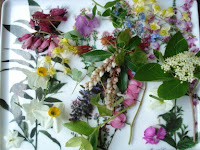The tone of the first half of McKibben’s, eaarth, is one of frustration. For twenty years, McKibben has been trying to educate his readers to understand the inevitability of dramatic change to our earth if CO2 was continually sent into the atmosphere. He is obviously, and understandably, frustrated at his inability to influence people and government enough to keep the predicted changes from taking place.
His new book, eaarth, begins by reviewing the current realities. He outlines the life changes we might consider to be able to cope with the new eaarth that we have created. Since we have already set changes that will significantly impact the eaarth in motion—even if we dramatically change our current fossil fuel use—we will have to figure out how to live on this changed eaarth.
He argues that we’ll need to get smaller and less centralized: small scale agriculture (sustainably grown); banks (connected to the community and not “too large to fail”); energy (using varied abundant local sources—water, sun, wind—rather than creating a new central grid); and economy (perhaps using a local currency).
The adjustment he predicts will be most difficult is a move away from viewing all growth as positive. He proposes we change our focus from growth to maintenance. He advocates that we return to a more traditional life style where community members depend on others in the community. This time we have the added benefit of the web. This web presence will keep us all connected at the global level as we attempt to live sustainably at the local level. (It always surprises me that the audience for this blog on local, sustainable living is viewed by people around the world). We can share our knowledge and help each other to move in a new direction—together—through our internet connections. The bumper sticker I could easily imagine on his hybrid would read: “Connect Globally, Live Locally”.















